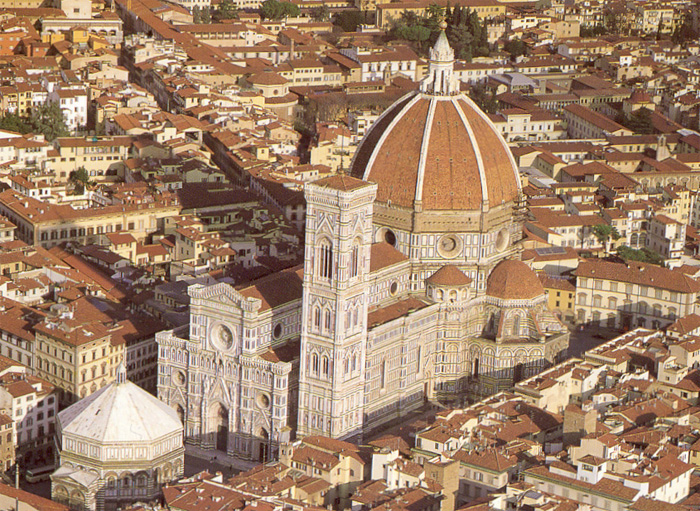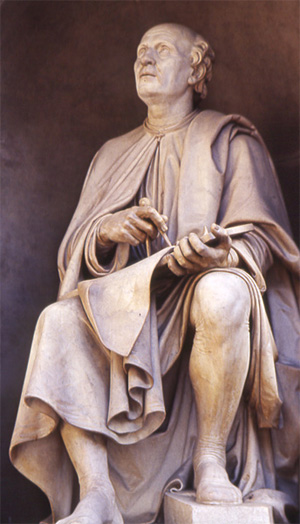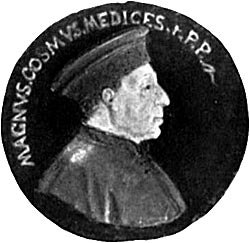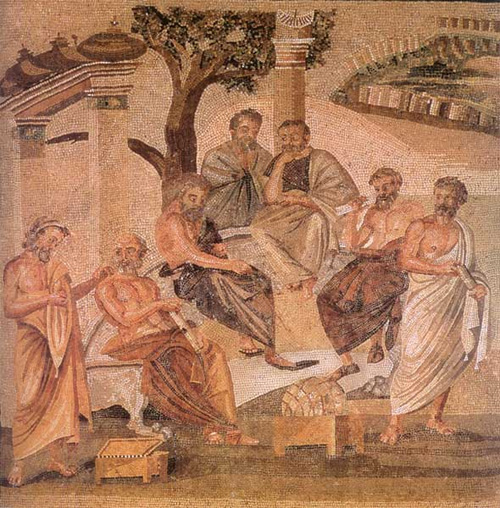Renaissance Florence
The artistic, economic and social changes that are associated with the Renaissance first began in the Italian city of Florence. In 1425, Florence was a self-governed, independent city-state with a population of 60,000. Surrounded by land, the city had no sea trade, but artist guilds and banking made Florence a money-making success. Many of Florence's families also built their fortunes on banking. The gold coin of Florence, called the florin, was so consistently pure that it became the standard currency of Europe.
Medallion with a portrait of Cosimo de Medici


 The construction of a dome on top of Florence's cathedral, called the church of Santa Maria del Fiore, marks the beginning of Renaissance architecture. Filippo Brunelleschi received a commission to build the first dome in Florence on a cathedral built in the Gothic style over one hundred years earlier.
The construction of a dome on top of Florence's cathedral, called the church of Santa Maria del Fiore, marks the beginning of Renaissance architecture. Filippo Brunelleschi received a commission to build the first dome in Florence on a cathedral built in the Gothic style over one hundred years earlier. Brunelleschi went to Rome to study ancient Greek designs and proportions, and he borrowed ideas from what he saw there to create a new architectural marvel - the dome. Brunelleschi's achievement in Florence became a symbol of the Renaissance; blending old Greek designs with modern engineering and artistic ideas to create a new Renaissance style.
The Medici family, originally farmers, made their fortune in banking, in Florence.
 in the beginning of the 15th century. Cosimo de Medici (1389-1464), Florence's wealthiest and most influential citizen, delighted in discussing humanist issues and was extremely generous in his support of scholars and artists such as Brunelleschi. He founded the famous Medici Library and organized the Plato Academy, where intellectuals would gather to discuss ideas concerning the Greek classics. The academy continued even after Cosimo's death.
in the beginning of the 15th century. Cosimo de Medici (1389-1464), Florence's wealthiest and most influential citizen, delighted in discussing humanist issues and was extremely generous in his support of scholars and artists such as Brunelleschi. He founded the famous Medici Library and organized the Plato Academy, where intellectuals would gather to discuss ideas concerning the Greek classics. The academy continued even after Cosimo's death.
Florence's wealth and success, guided by rich patrons like the Medicis and the artists they supported, became a new model for society in Europe. The Middle Ages, where cities and states were ruled by kings, emperors and dukes, gradually gave way to governments led by wealthy merchants and bankers, The Renaissance values that grew from the ideas they supported, spread from Florence to other Italian cities and north to the Netherlands.
 ශිල්ප 64
ශිල්ප 64